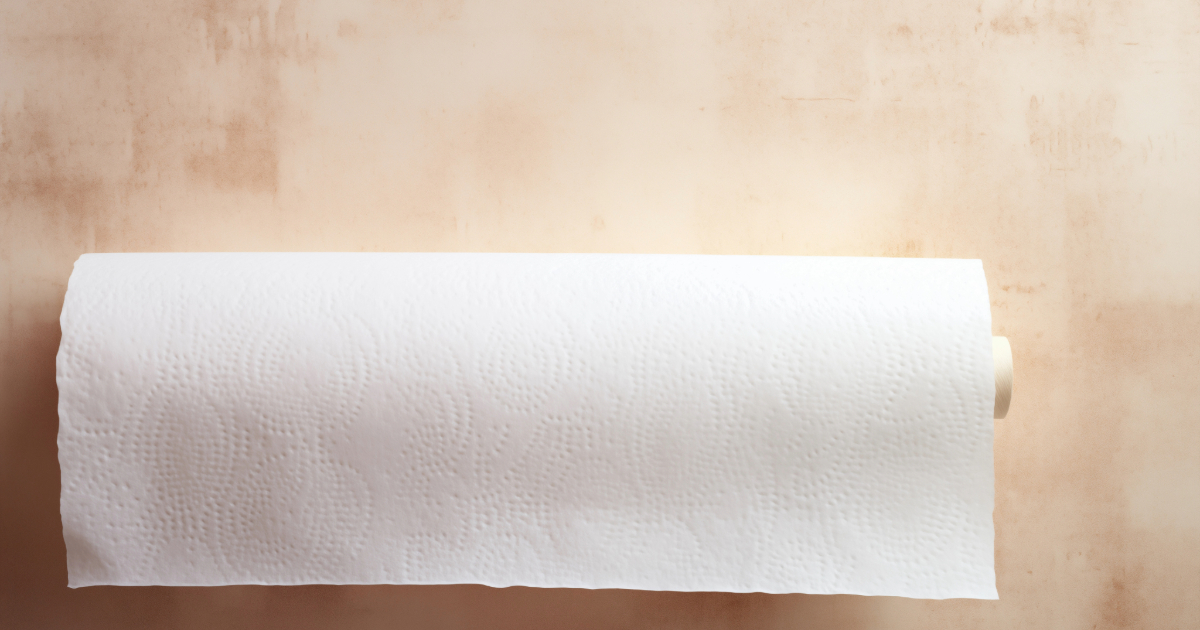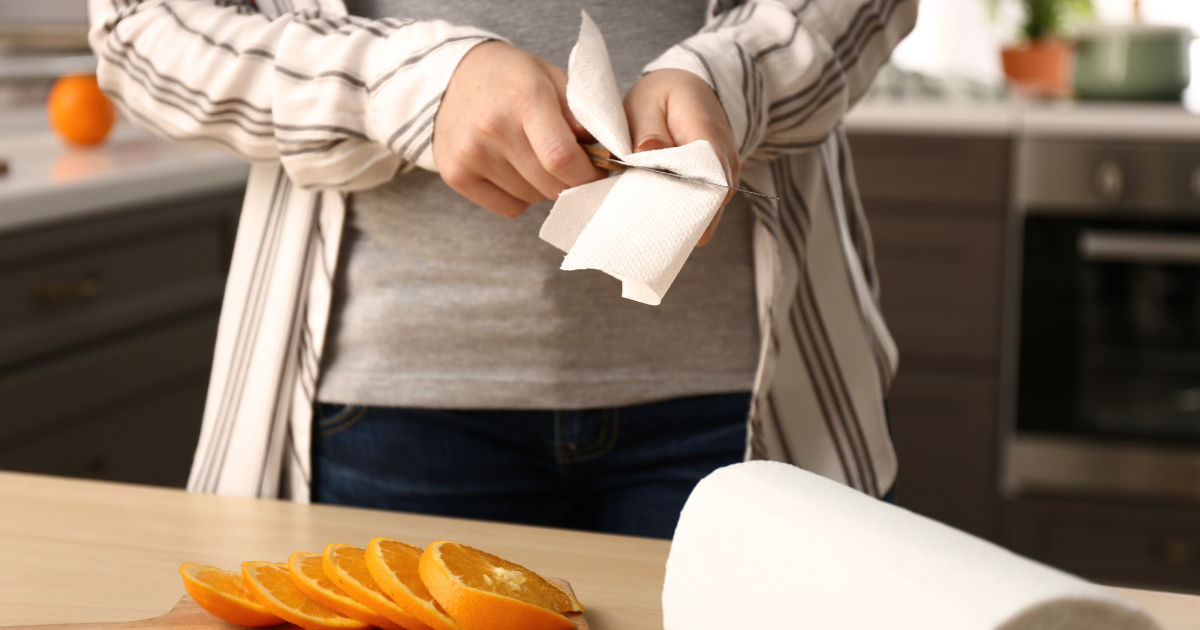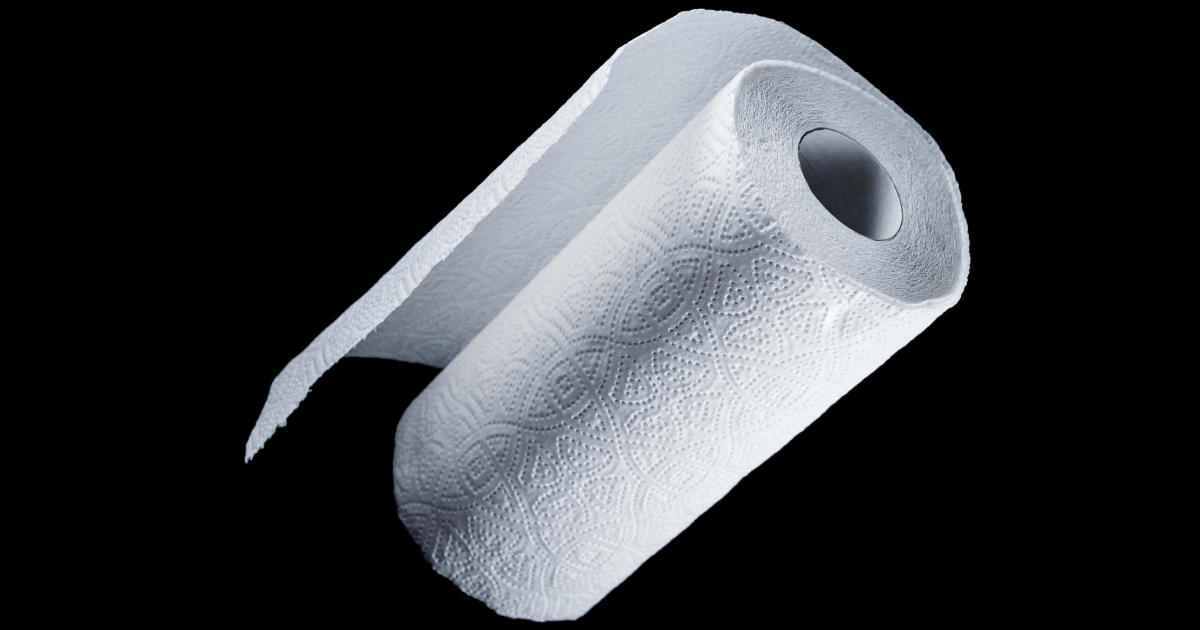Paper towels are a common household staple used for cleaning, drying, and wiping.
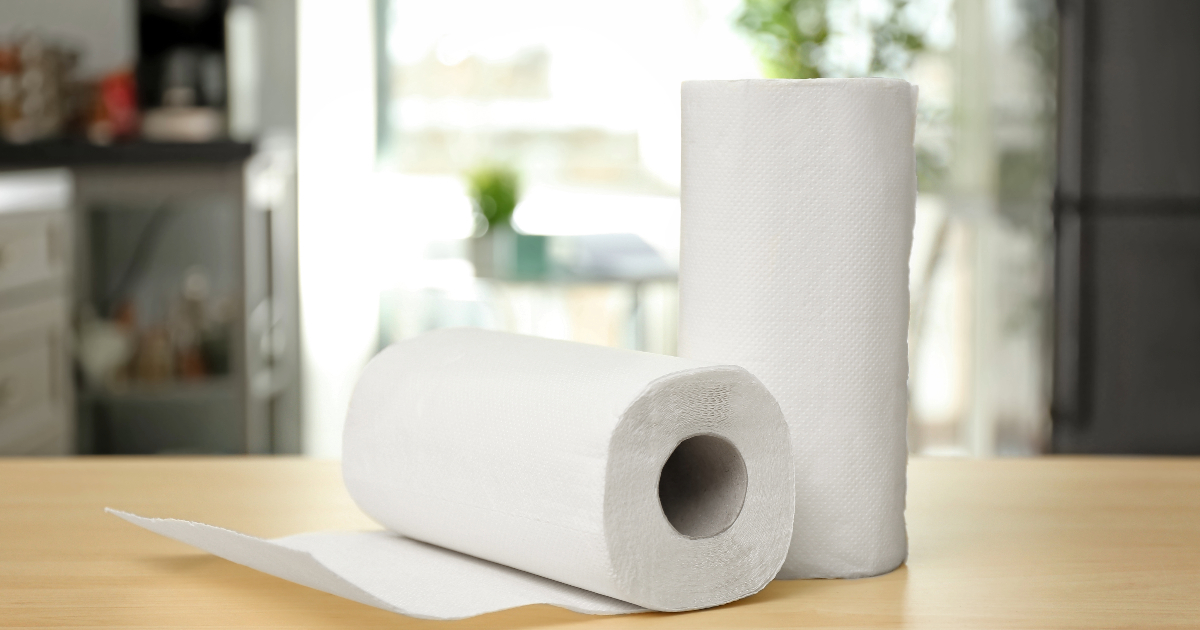
Chances are you reach for them multiple times a day without giving them much thought.
But have you ever wondered – what exactly are paper towels made of and how are they produced?
A Brief History of Paper Towels
The origin of paper towels dates back to 1907 and happened by accident. The Scott Paper Company, the leading toilet paper manufacturer at the time, received a railcar full of toilet paper that was too thick to be usable.
Rather than throwing it out, Arthur Scott remembered hearing about a teacher who gave students soft paper to use instead of germ-ridden cloth towels. Inspired, he converted the too-thick toilet paper into disposable towel-sized sheets and marketed them under the name “Sani-Towels.”
By 1931, Scott Paper introduced paper towels for kitchen use. Their absorption and disposability eventually won over consumers, making them a staple cleaning product today.
What Are Paper Towels Made Of?

Conventional paper towels are made from virgin wood pulp extracted from trees. The main steps are:
- Trees are harvested and debarked. The inner wood is chipped into small pieces.
- The wood chips are churned to separate the long fibers, creating a pulp.
- The pulp is cleaned, bleached, and refined to remove contaminants and particles.
- Resin is added to reconnect the fibers, improving wet strength.
- The pulp is pressed into extremely thin sheets on a flat surface.
- The sheets are dried using heated rollers.
However, many modern paper towels are made from recycled materials like old newspapers, magazines, and cardboard. This recycles waste that would otherwise end up in landfills and reduces the need for virgin pulp from trees.
How Do Paper Towels Absorb So Much Liquid?
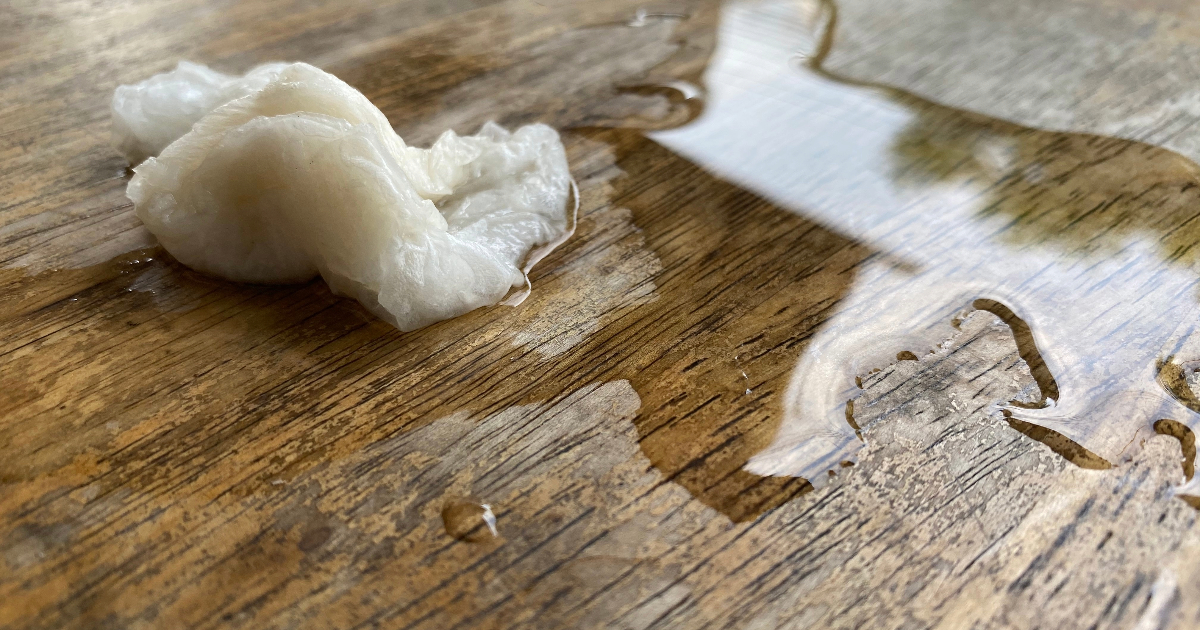
Paper towels are highly porous and permeable, allowing both liquid and air to pass through tiny spaces between the fibers. Four key factors make them ideal for absorbing spills:
- Cellulose fibers – Paper towels are mostly made of cellulose from plant sources. Cellulose attracts and bonds to water molecules.
- Capillary action – The towel’s porous surface draws in moisture through tiny gaps, like a paper straw soaking up water.
- More fluff – Quilted or textured towels have more air spaces to hold liquid between the layers.
- Resin – Added resin reconnects fibers so towels stay strong when wet instead of disintegrating.
Paper Towel Design Features
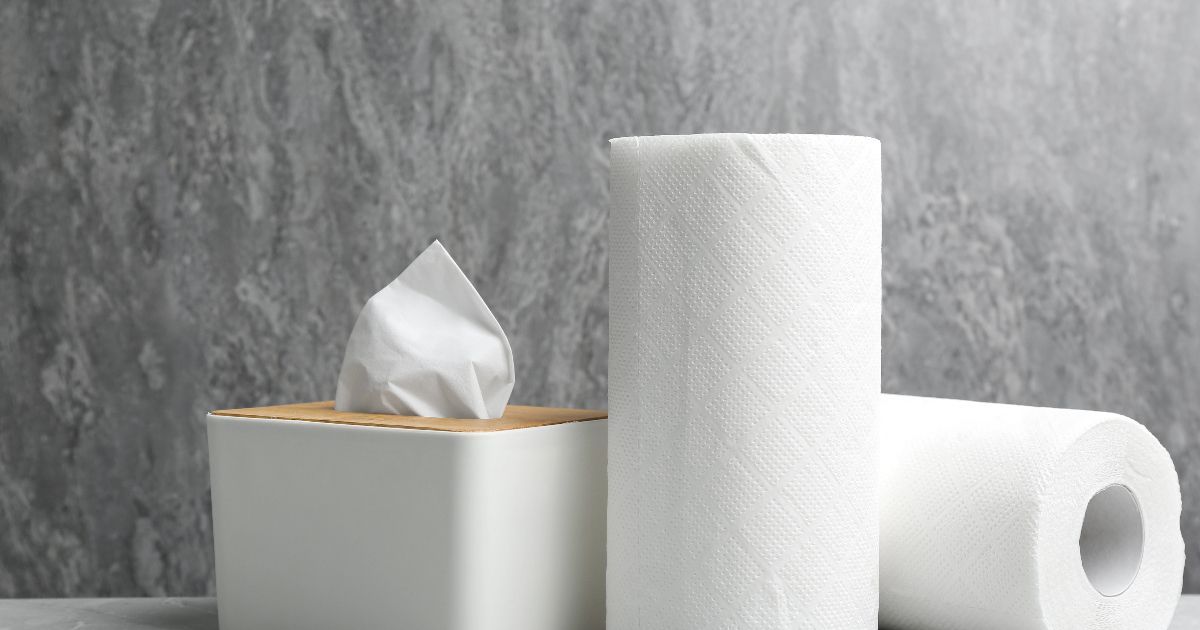
Beyond absorbency, paper towels are designed with certain features that optimize their functionality:
- Perforations allow you to tear off sheets easily.
- Embossing creates raised diamond or circle shapes to improve absorption.
- The soft texture makes them gentle on hands and surfaces.
- Decorative prints make plain white towels more decorative. Most inks are water-based and non-toxic.
- Varying sheet sizes – Larger sheets are more economical but smaller sheets reduce waste.
Recycling and Sustainability
While standard paper towels require a significant amount of trees and water to produce, eco-friendly alternatives help reduce environmental impact:
- Recycled paper towels – Made from 100% recycled materials instead of virgin pulp.
- Bamboo paper towels – Made from fast-growing bamboo instead of tree pulp.
- Swedish dishcloths – Reusable, biodegradable alternative to paper towels.
- Composting – Rather than sending used paper towels to landfills, you can compost them at home.
Choosing sustainable options like recycled paper towels and reusable clothes can significantly lower your environmental footprint.
FAQs
How many paper towels are made from one tree?
To make one ton of paper towels requires around 17 trees and 20,000 gallons of water. One tree can produce about 118 rolls of paper towels.
Who uses the most paper towels?
Americans account for the largest share of global paper towel consumption, using about 50% more per person than Europeans.
Why are paper towels better than cloth towels?
Paper towels are more sanitary because they’re disposed of after each use. They also absorb liquid better than most cloth towels.
How do you make paper towels more absorbent?
Try folding them over to create more air space between the layers. The gaps help absorb and hold more liquid.
Are paper towels compostable?
Most standard paper towels are compostable, breaking down over time into nutrient-rich soil. Avoid towels with plastic coatings.
How long does it take a paper towel to decompose?
On average, a paper towel takes about a month to fully decompose. Those with stuck-on food or grease may take longer.
Conclusion
Paper towels have become a modern-day necessity valued for their absorbency, hygiene, and convenience.
While many require significant resources to produce, recycled paper towels and other eco-friendly options help lower their environmental impact.


